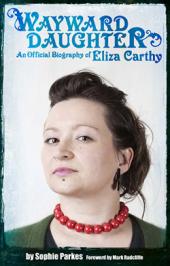
Not every 37 year old has her biography written yet, however, British folk musicians in their twenties such as Lucy Ward[52] or Hannah James (Kerfuffle,[41] Demon Barber Roadshow[50]) claim Eliza Carthy, daughter of Martin Carthy[45] and Norma Waterson,[40] as an important influence.
BBC broadcaster Mark Radcliffe is reckoning:
Author Sophie Parkes adds:
Eliza Carthy grew up on St Ives Farm, Robin Hood Bay, Yorkshire, or shall we say, she grew up in pubs, folk clubs and festivals. She learned all the songs and accompanied her parents frequently to gigs. At Fylde Festival aged six she begged to be allowed to join them on stage. Eliza's father, Martin Carthy, relates:
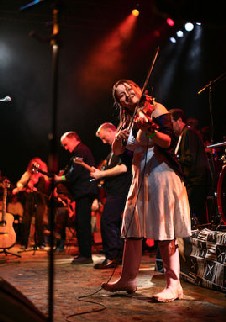
Martin also remembers:
The fiddle though soon became Eliza's focus, whereas her appearance haven't been on a par with the image of a traditional fiddle player:
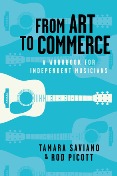 Indie manager Tamara Saviano
and singer-songwriter Rod Picott
[31]
[52]
share their secrets on how to make a living - at doing what you love - in the music business.
Their companion book to an one-day workshop teaches how to think like an entrepreneur
and build a career as an independent musician beyond the point of
creating music. Whether recording, packaging, booking or marketing,
Tamara and Rod provide answers to questions such as:
Can you get my song to Taylor Swift? Can you make me sound like Elvis?
Is my CD in Wal-Mart? How do I get to Carnegie Hall? ...
Purchase the eBook From Art to Commerce for your Kindle or iPad @
amazon
or
itunes!
Indie manager Tamara Saviano
and singer-songwriter Rod Picott
[31]
[52]
share their secrets on how to make a living - at doing what you love - in the music business.
Their companion book to an one-day workshop teaches how to think like an entrepreneur
and build a career as an independent musician beyond the point of
creating music. Whether recording, packaging, booking or marketing,
Tamara and Rod provide answers to questions such as:
Can you get my song to Taylor Swift? Can you make me sound like Elvis?
Is my CD in Wal-Mart? How do I get to Carnegie Hall? ...
Purchase the eBook From Art to Commerce for your Kindle or iPad @
amazon
or
itunes!
Tamara Saviano / Rod Picott, From Art to Commerce: A Workbook for Independent Musicians.
BookBaby, 2013, pp129, US$9.99.
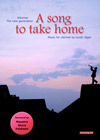 Since 1999, German double bass player Guido Jäger is a member of the Giora Feidman Trio, and Feidman himself
[32]
provided the impetus to publish 15 of Jäger's tunes
for B and C clarinet with sheet music and chord symbols
as contribution to a living klezmer culture.
All pieces are recorded with complete set up and without clarinet on the accompaying CD.
Mr Feidman writes in the foreword:
The reason why they are so beautiful, is they are reflecting our very deep longing for spiritual food.
The start of Jäger's compositional activity as well as this collection is
"Karolina", originally thought of as a children's song and immortalised on
Feidman's "Journey" [12], preliminary conclusion
is "Sannas Song" from the recent album "Very Klezmer" [47].
Eventually, "A Song to take home" is the frequent finale of a Feidman show.
Standing Ovations from me too!
Since 1999, German double bass player Guido Jäger is a member of the Giora Feidman Trio, and Feidman himself
[32]
provided the impetus to publish 15 of Jäger's tunes
for B and C clarinet with sheet music and chord symbols
as contribution to a living klezmer culture.
All pieces are recorded with complete set up and without clarinet on the accompaying CD.
Mr Feidman writes in the foreword:
The reason why they are so beautiful, is they are reflecting our very deep longing for spiritual food.
The start of Jäger's compositional activity as well as this collection is
"Karolina", originally thought of as a children's song and immortalised on
Feidman's "Journey" [12], preliminary conclusion
is "Sannas Song" from the recent album "Very Klezmer" [47].
Eventually, "A Song to take home" is the frequent finale of a Feidman show.
Standing Ovations from me too!
Guido Jäger, A song to take home: Klezmer - The new generation.
Pianissimo PV1012,
2013, ISBN-13-42-6018404-0391, pp37, €18,90 (incl. CD).
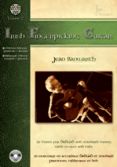 Volume 2 of Jean Banwarth's
[25][27][51]
Irish Fingerpicking Guitar tutorial continues where Volume 1
[44]
has wound up: Another 20 tunes in DADGAD (5 tunes in standard tuning as well)
in tab and stave notes and chords for accompaniment
from "The Butterfly" slip jig to "The White Petticoat" jig
with two Carolan tunes ("Mr O'Connor" for two DADGAD guitars)
and Banwarth's "Colifot Waltz" and the slow reel "Vivement vendredi"
from the Djal repertoire thrown in for good measure.
The tutor is in both French and English, besides technical comments,
there is some background info too.
This time it is quite challenging, the pace is quicker, the ornamentations
and bass lines are more complex. The accompanying DVD is a great support.
Check out some videos @ Youtube.com!
Volume 2 of Jean Banwarth's
[25][27][51]
Irish Fingerpicking Guitar tutorial continues where Volume 1
[44]
has wound up: Another 20 tunes in DADGAD (5 tunes in standard tuning as well)
in tab and stave notes and chords for accompaniment
from "The Butterfly" slip jig to "The White Petticoat" jig
with two Carolan tunes ("Mr O'Connor" for two DADGAD guitars)
and Banwarth's "Colifot Waltz" and the slow reel "Vivement vendredi"
from the Djal repertoire thrown in for good measure.
The tutor is in both French and English, besides technical comments,
there is some background info too.
This time it is quite challenging, the pace is quicker, the ornamentations
and bass lines are more complex. The accompanying DVD is a great support.
Check out some videos @ Youtube.com!
Jean Banwarth, Irish Fingerpicking Guitar Vol. 2.
MusTraDem MTD 1341,
2013, pp39, €22,00 (incl. DVD).
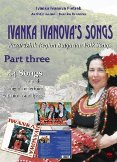 Bulgarian singer Ivanka Ivanova Pietrek,
who had worked with the Schäl Sick Brass Band
[23]
[32]
from Cologne, has collected and recorded more than thousand folk songs from the Pazardjik area.
Several eBooks in Bulgarian, English and German have now been made available,
featuring music and lyrics from the singer's repertoire, recorded over the years
on cassettes and CDs, radio and TV shows.
The songs are classified by type; loanwords and dialect are explained.
Furthermore, there is an introduction to Bulgarian throat singing.
Bulgarian singer Ivanka Ivanova Pietrek,
who had worked with the Schäl Sick Brass Band
[23]
[32]
from Cologne, has collected and recorded more than thousand folk songs from the Pazardjik area.
Several eBooks in Bulgarian, English and German have now been made available,
featuring music and lyrics from the singer's repertoire, recorded over the years
on cassettes and CDs, radio and TV shows.
The songs are classified by type; loanwords and dialect are explained.
Furthermore, there is an introduction to Bulgarian throat singing.
Ivanka Ivanova Pietrek, Ivanka Ivanova's Songs - Pazardzhik Region Bulgarian Folk Songs.
epubli,
2013, €24.99 respectively.
 Tim Knight again
[48][50]!
This time four traditional songs arranged for mixed voice choir -
bass, alto or soprano solo, respectively, and SATB with piano accompaniment.
"Shenandoah" is an American folk song from the early 19th century that nearly became the state song for Virginia.
"Barbara Allen" is the most widely collected song in the English language, equally popular in Britain and North America.
"Banks of Allan Water" is a rather unfamiliar English ballad, I suppose,
"I Know Where I'm Going" is a more familiar traditional Scottish/Irish ballad about a woman pining for her lover.
Tim Knight again
[48][50]!
This time four traditional songs arranged for mixed voice choir -
bass, alto or soprano solo, respectively, and SATB with piano accompaniment.
"Shenandoah" is an American folk song from the early 19th century that nearly became the state song for Virginia.
"Barbara Allen" is the most widely collected song in the English language, equally popular in Britain and North America.
"Banks of Allan Water" is a rather unfamiliar English ballad, I suppose,
"I Know Where I'm Going" is a more familiar traditional Scottish/Irish ballad about a woman pining for her lover.
Tim Knight, 4 Traditional Song Arrangements for Mixed Voice Choir.
Tim Knight Music/Spartan Press TKM342,
2006, ISMN 979-0-708106-50-0, pp18, £3.00.
 Last but not least, let's talk about Irish born button accordionist Paddy O'Brien,
living in Saint Paul, Minnesota, and being married to novelist Erin Hart
[47][50].
Paddy O'Brien is best known for his encyclopedic knowledge of traditional Irish music.
In his anecdotal memoir The Road from Castlebarnagh
he recalls his evolution as traditional musician
growing up in a thatched roofed cottage without electricity and running water
in rural Co. Offaly in the midlands of Ireland.
He also has been working for over 15 years on his remarkable Paddy O'Brien Tune Collection,
comprising 1,000 jigs, reels, hornpipes and polkas, many of them have never before recorded or transcribed.
He doesn’t read music and remembers all tunes using mnemonic devices like where he first heard it and from whom, so the written notes include the histories of the tunes and techniques used.
Paddy O’Brien’s epic collection, Volume 1 and 2, is available as boxed sets and single CDs, and eventually as digital download (single tunes or whole albums as MP3 files).
He is currently working on Volume 3, which will include another 500 tunes.
To defray production costs and digitizing, he has started a Kickstarter Project,
which will run through November 30 @
www.kickstarter.com!
Last but not least, let's talk about Irish born button accordionist Paddy O'Brien,
living in Saint Paul, Minnesota, and being married to novelist Erin Hart
[47][50].
Paddy O'Brien is best known for his encyclopedic knowledge of traditional Irish music.
In his anecdotal memoir The Road from Castlebarnagh
he recalls his evolution as traditional musician
growing up in a thatched roofed cottage without electricity and running water
in rural Co. Offaly in the midlands of Ireland.
He also has been working for over 15 years on his remarkable Paddy O'Brien Tune Collection,
comprising 1,000 jigs, reels, hornpipes and polkas, many of them have never before recorded or transcribed.
He doesn’t read music and remembers all tunes using mnemonic devices like where he first heard it and from whom, so the written notes include the histories of the tunes and techniques used.
Paddy O’Brien’s epic collection, Volume 1 and 2, is available as boxed sets and single CDs, and eventually as digital download (single tunes or whole albums as MP3 files).
He is currently working on Volume 3, which will include another 500 tunes.
To defray production costs and digitizing, he has started a Kickstarter Project,
which will run through November 30 @
www.kickstarter.com!
 Paddy O'Brien, The Road from Castlebarnagh - Growing Up in Irish Music, a Memoir.
Orpen Press,
2012, ISBN 978-1871605-69-2, pp300, US$24.95.
Paddy O'Brien, The Road from Castlebarnagh - Growing Up in Irish Music, a Memoir.
Orpen Press,
2012, ISBN 978-1871605-69-2, pp300, US$24.95.
The Paddy O’Brien Tune Collection, Volume 1.
1995, 10-CD set plus 124-page booklet, US$170.
The Paddy O’Brien Tune Collection, Volume 2.
2011, 13-CD set plus 126-page booklet, US$195.
Digital Downlad @ cdbaby.com.
Paddy O'Brien @ FolkWorld:
FW#33,
#35,
#46
Eliza early decided to go professional. She teamed up with young artists such as John McCusker,[26] Martin Green,[40] Kathryn Tickell[50] and eventually formed a duo with Nancy Kerr.[37]
Predominantly playing English music, she exhibited a revolutionary mind. Eliza hoped she could weave in current musical influences like electronica or drum and bass - and be successful, possibly even appealing to a younger audience.
In 1995 Topic Records approached her to do a solo album, "Red Rice," initially released as a double album. Later the two separatist halves were released as two separate albums; put crudely, Red is for clubbers and Rice for crusties (Tony Hendry).
The British mainstream media loved it. Suddenly there was a new more acceptable face to the genre: young, attractive, striking. Warner signed her (an experience that did her no good in the end) and Eliza started writing original music.
Eliza teamed up with Jon Boden and John Spiers[52] and put together a collection of songs with her mother Norma that they had been singing for years.[43] Eventually, Simon Emmerson hired her for his Imagined Village project that was similar to his Afro Celt Sound System but which tackled the Copper and Waterson families repertoire.[35] Eliza became contributing fiddle and vocals to half of the debut album's tracks and an integral part of the touring band.
Wayward Daughter traces the colorful life of the fearless, full-figured fiddle player, who benefitted from her family background, went her own way with talent and hard work and eked out a fundamental place in the British folk scene.
Sophie Parkes has been a fan of Eliza since she discovered the "Angels and Cigarettes" album.
The detailled narration pictures (literally with an extensive collection of photographs from Eliza’s own collection) Eliza's musical biography, to a lesser extent her personal life. Sophie met Eliza several times and interviewed family members, friends and industry peers.
 The Definitive Collection is a toe-in-the-water kind of record. There's some good stuff on it,
and it's been constructed to be a low price record, but there really does need to be a thorough
Best Of, Eliza Carthy muses in Sophie Parkes' biography. There's not one thing with all
my excellent shit on it, because I've got some excellent shit that I'm really proud of.
The Definitive Collection is a toe-in-the-water kind of record. There's some good stuff on it,
and it's been constructed to be a low price record, but there really does need to be a thorough
Best Of, Eliza Carthy muses in Sophie Parkes' biography. There's not one thing with all
my excellent shit on it, because I've got some excellent shit that I'm really proud of.
Since Eliza's bio doesn't appear on her deathbed, we agree with Stewart Lee:
Hallowe'en (All Hallows' Eve) with its spooky costumes and trick or treat has been just overcome. The celebration originally has its roots in the Gaelic Samhain festival marking the end of the harvest season and the beginning of winter. It was seen as a time when the spirits or fairies could easily slip out of The Otherworld, which must be understood as a realm parallel to or beyond our mortal existence.
In the late 1980s, however, Ríonach uí Ógáin, director of the National Folklore Collection (Cnuasach Bhéaloideas Éireann) at University College Dublin, and music business promoter Tom Sherlock came to the conclusion that there did not seem to be many available recordings dealing with music and song associated with the Otherworld.
It took two decades to select a tiny sample of songs in Irish and English from the National Folklore Collection and publish it on two CDs and a book.
The earliest recordings date from the early 1920s, and span the time period from Baroque harper Turlough O'Carolan[20] (whose earliest composition Sí Bheag, Sí Mhór refers to two fairy hill forts) to 20th century fiddler Michael Coleman. Recent singers feature Ciarán Ó Gealbháin (of Danú)[42] and Áine Furey (Bohinta).
There are 17 songs (6 in English, 11 in Irish), covering the grotesque, the marvellous, the cautionary and the humourous, and 15 pieces of music (5 tunes lilted, 1 whistled, 8 played on the fiddle, 1 on tin whistle, flute and uilleann pipes, respectively). The subject matter in songs (and tune titles) reflect the wide range of belief: warnings of punishment in the afterlife, chance encounters with fairies, transference of special powers (e.g. musicians with marked imporvement in their playing skills), fairy abduction, changelings, death messengers, treasures bestowed ...
"An Cailin Deas Cruaite Na mBo" (The Pretty Girl Milking the Cows) is a religious song with supernatural overtones (compare recent instrumental and vocal recordings of Kevin Burke,[43] Comas[32] or Runa[45]). A priest is called to the bed of a dying man, but encounters a young girl and becomes entranced by her singing. The man dies before he can administer the last rites.
"Cruel Willie" (Cruel Ship's Carpenter) murders his sweetheart before going to sea but her ghost reveals his evil doings (e.g. recorded by the Celtibillies).[23] In "Reidhchnoc Mna Duibhe" (Smooth Hill of the Dark Woman) the poet falls in love with a woman who has escaped the fairies for a while.[23] "An Mhaighdean Mhara" (The Mermaid) is the well-known story of a mortal man who marries a mermaid and hides her cloak, so that she is unable to return to sea.

Some songs are known in other traditions, e.g. "Down by the Green Roadside" about a woman murdering her children, is better known as "The Cruel Mother" (widely recorded from Hedy West[46] and June Tabor[31] to Emily Smith,[24] the above-mentioned Hannah James's Kerfuffle[41] and The New Penguin Book of English Folk Songs[52][49]).
Some tune titles suggest an otherwordly connection: "Fairy Reel," "Banshee Reel" (played by Micho Russell here),[40] "The Lilting Banshee" jig[33] (which I also have in my own repertoire). Oral tradition in Kerry says that the popular air "Port na bPúcaí" (Tune of the Fairies) is fairy music; it is a showpiece for accordionists,[48] fiddlers,[34][33][36] pipers,[27] guitarists,[4] and harpists.
The latter on an album aptly titled "The Thorn Tree;"[33] fairies are said to gather, play music and dance around a solitary whitethorn or hawthorn bush. This is also an example that certain tunes have otherworld links because of its associated lore, e.g. "Lone Bush" composed by fiddler Ed Reavy.[42]
Junior Crehan composed "Lutharadán's Jig."[42] He reportedly said he encountered a small supernatural man (lutharadan, lurgadan, leprechaun) and was given this tune. Piper Willie Clancy's party piece had been the jig "The Gold Ring."[41]
The Otherworld: Music and Song from Irish Tradition, beautifully illustrated with many photographs in black and white, is not determined to collect dust on the library shelves of folklore departments, this selection is a great addition in the pantheon of specialised Irish songbooks. Browse through lyrics and infos in the book, listen to the songs and tunes on the two accompanying CDs, and perhaps even clear your throat and raise your voice...
Photo Credits:
(1ff) Book Covers, (10) Eliza Carthy,
(11) Paddy O'Brien
(from website/author/publishers).